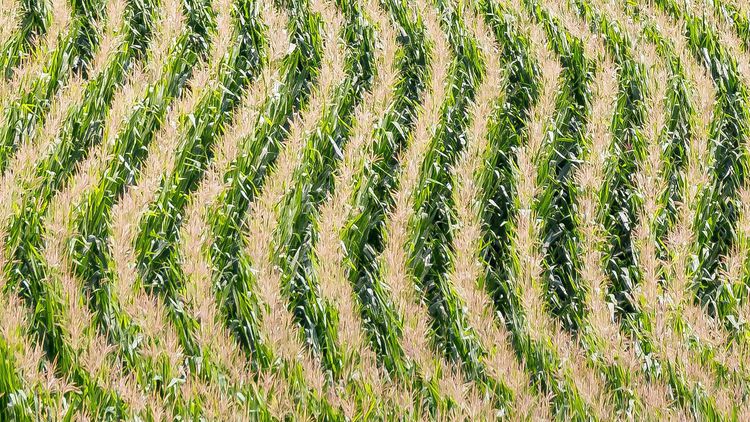The Challenge
Seed metering and delivery technology is the heart of all row crop planting systems. Today’s metering and delivery hardware has maximized existing mechanical efficiencies and reached the limit of physics within the system. While necessity may be the mother of all invention, we believe possibility is the mother of disruptive innovation. This challenge seeks the next disruptive idea in seed metering and delivery technology which will advance row crop planting technology and feed the world of tomorrow.
What Can You Do?
- Click ACCEPT CHALLENGE above to sign up for the challenge;
- Read the Challenge Guidelines to learn about the requirements and rules;
- Share this challenge on social media using the icons above. Show your friends, your family, or anyone you know who has a passion for discovery;
- Be a part of the solution. Start a conversation in our Forum, ask questions and connect with other innovators.
Background
Seed metering is the process of selecting a single seed and placing it into the soil at set distance intervals. These intervals determine the plant population, or number of seeds planted within a standardized area, usually relayed in seeds per acre. Optimal plant population varies depending on the crop being planted. Row crop planting is seed metering in long, straight lines known as rows. Row crop planters are multi-row implements utilizing seed metering systems to plant 4, 8, 12, and even up to 48 rows at a time. Row-crop planters allow growers to plant large swaths of land in a short amount of time.
Current seed meters utilize crop-specific disks that are designed to separate a single seed from a bulk storage area. These seeds are generally captured against a rotating disc with mechanical fingers, brushes, positive air pressure, or negative air pressure. The seed is then moved to a release point where it is dropped into the seed trench. How well a seed metering technique picks up a single seed and releases it is known as seed singulation.
As the size of farming operations has grown, so too has the planting equipment utilized to efficiently and profitably plant crops. Increasing planting efficiency by increasing the implement size only works to a certain point. Once implements reach a certain size, we begin to see diminishing returns due to weight related soil compaction (inhibits plant growth), transportation and storage issues.
What is the best way to cover more ground with same size machine? Higher travel speed. Traditionally row-crop planting has been conducted at 4-6 mph. The solution seems simple enough, we just speed up to 8-12 mph and our problem is solved, right? Wrong. The problem with increased speed has to do with the dynamics of the row crop planter - more specifically the planter row unit, seed meter, and the forward velocity of the seed with respect to the ground. Traditionally, after a seed is singulated it is released from the meter into a seed tube and travels approximately 26” down the center of the tube to the seed trench. Increasing the speed of the planter does not increase the speed at which the seed drops to the ground. Increasing speed simply requires more seeds to be released from the meter into the seed tube in a shorter time period enhancing the risk of seeds ricocheting off the seed tube and one another. Additionally, to ensure perfect placement, the seed must exit the seed tube at zero relative velocity to the seed trench to prevent the seed from bouncing down the furrow and causing inconsistent placement.
Challenge Overview
We are seeking ideas for seed metering techniques that avoid the issues caused by increased planting speeds. The solution must operate at various speeds, seeding populations, depth below soil surface, field conditions and terrain. The solution can supplement current seed meter technology by eliminating speed issues or be an entirely different seed metering technique. The solution must fit within an envelope of 13”wide, 30” long and 40” high. This solution must not infringe intellectual property of other established high speed planting technologies. The solution will need to be capable of operating in all planting conditions experienced by row crop planters such as full tillage, no-till, rocky soil, sticky wet soils, and high-residue double crop scenarios.
The wining participant must provide a short report describing their solution and providing a pictorial representation and a short cost analysis of their solution. The description must detail how their design can adapt to variable seed populations, seed types, seed trench depth, and planting speeds. Any submission without a pictorial representation (or working model), showing all the major components and an explanation of their roles, will not be considered for this challenge.
Finalists and Prizes
The first place prize of $10,000 will be awarded to the participant whose solution best meets all the needs of this challenge. If more than one solution could be combined to satisfy this challenge, the prize will be split up evenly among winning individuals/teams. If a solution that meets all the judging criteria is not found, no prize will be given. The Sponsor has sole discretion in judging and awarding (or not awarding) the prize.
Judging Criteria
|
Criteria
|
Description
|
Percent Importance
|
|
Performance
|
- Singulation Pass/Fail (5 pts)
- Placement Accuracy Pass/Fail (5 pts)
- Speed Range (0-12mph) Ranked (15 pts)
- All intervals between [7.5 pts]
- Max speed ranked [7.5 pts]
- Seeding Populations Pass/Fail (5 pts)
- All intervals between (15000 – 225000 seeds/acre)
- Seed Trench Depth Pass/Fail (5 pts)
- All intervals between 0-2.5" within 1/4" of target depth
|
40
|
|
Cost
|
Competitor submits a well-thought-out explanation of the following cost categories.
- Development Costs (5 pts)
- Testing Costs (5 pts)
- Manufacturing Costs (10 pts)
|
20
|
|
“Ilities”
|
Competitor submits a well-thought-out explanation of the following non-functional requirement categories.
- Reliability (5 pts)
- Serviceability (5 pts)
- Durability (5 pts)
- Versatility (5 pts)
|
20
|
|
Originality
|
- Does not infringe on patent technologies (10 pts)
- Solves challenge from a new perspective (10 pts)
|
20
|








